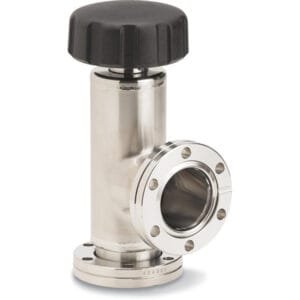Pneumatic Viewport Shutters: Reliable Protection and Precision Operation in UHV Systems
Pneumatic Viewport Shutters from TFM are designed to safeguard critical optical components in high- and ultra-high vacuum (UHV) environments. These shutters provide an effective barrier against material deposition during coating, etching, or evaporation processes, preserving viewport clarity and system performance. Built for environments where precision, automation, and cleanliness are essential, these shutters are indispensable in semiconductor fabrication, surface analysis systems, and thin film deposition chambers.
Crafted for operational integrity under harsh conditions, TFM’s pneumatic shutters integrate a robust actuator mechanism that enables precise, repeatable operation. They remain closed during material deposition, opening only under designated safe conditions to maintain both system integrity and operator safety.
Key Performance Features:
Deposition Shielding: Protects viewport glass from contamination and buildup during sputtering or evaporation processes.
UHV Compatibility: Reliable operation at base pressures below 10⁻⁹ Torr, ensuring suitability for ultra-clean environments.
Bakeable to 250°C: Withstands high-temperature bakeout cycles for decontamination without degrading mechanical performance.
Pneumatic Actuation System:
Solenoid-Ready Control: Uses a solenoid-operated spool valve (not included) to direct compressed gas between actuator ports. The shutter opens when energized and returns to a default closed position when de-energized.
Adjustable Sweep Stops: Integrated stops allow users to precisely set the angular sweep of the shutter plate for optimal clearance.
Flow Regulation: Built-in air flow regulators at each port maintain consistent, controlled operation.
Quick Maintenance: The actuator assembly detaches with two cap screws, allowing fast removal for system bakeouts or servicing.
Input Pressure Rating: Operates effectively at input pressures up to 98 psi, ensuring responsive motion under controlled airflow.
Typical Applications:
Semiconductor process chambers
Molecular beam epitaxy (MBE) systems
Ion beam deposition equipment
Surface science instrumentation
Custom UHV research systems
TFM’s Pneumatic Viewport Shutters deliver reliable shielding and controlled actuation, ensuring long-term clarity of optical access and enhanced system uptime in precision vacuum environments. Whether used in R&D or production, these shutters are engineered for consistent performance under pressure—literally.





Reviews
There are no reviews yet.